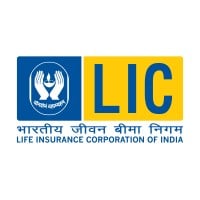
Life Insurance Corporation of India
The Life Insurance Corporation of India (LIC) is a state-owned Life Insurance Company of India. Founded in 1956, it operates as a Government-Owned Corporation, headquartered in Mumbai, Maharashtra, and is a key player in the life insurance sector in India. LIC offers a wide range of insurance products to cater to different needs of individuals, including Life Insurance, Health Insurance, Pension Plans, ULIPs, Group Schemes and Micro Insurance. We have a vast network of agents and branches across the country and overseas, making it accessible to a large section of the nation's residential and non residential population.






